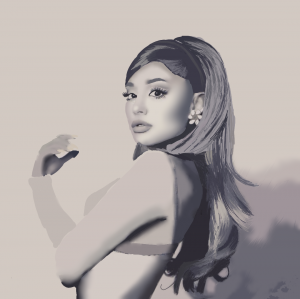Shawn Mendes’s fourth studio album leaves us all in “Wonder”
Shawn Mendes
Shawn Mendes Official Website caption: “Wonder” emerges as a stunning blend of vocals and instrumentals, showcasing a different side to Shawn Mendes’s music.
February 24, 2021
Shawn Mendes released his refreshing fourth studio album, “Wonder”, on Dec. 4, stunning listeners with diverse rhythms and deviating from traditional pop music.
Many of the songs in “Wonder” are centered around singer Camila Cabello: Mendes’s longtime friend, current girlfriend, and inspiration for the album.
During the COVID-19 quarantine, a multitude of artists have spontaneously released new music and Mendes was no different, gracing listeners with an introspective album that diverged from the styles of his old albums. He stated in an interview with Radio.com that he’s “evolved as a person and that’s… reflected in the music.”
Mendes said that the theme of Wonder” was “freedom,” but the sheer depth of the album makes it seem more centered around emotional honesty and vulnerability. After “Intro,” he starts off the album with the lyrics “I wonder if I’m being real/Do I speak my truth or do I filter how I feel?” which is essentially him asking if he’s being true to himself and the people around him.
This pattern of reflective lyrics is showcased best in “Monster (Shawn Mendes and Justin Bieber),” where he admits that “I came in with good intentions and then I let it go” and in “Always Been You,” when he confesses to Cabello that “You’ve seen all my darkest fears/Like you’ve known me for a thousand years/The boy who’s really underneath/All the scars and insecurities.”
Wonder is defined by its rapidly changing beats — sometimes the music transitions, both within songs and between them, cause near whiplash with the sudden changes from soft piano to hardcore percussion, like in “Song For No One.” It was a risky move; all the fluxes in the music could cause listeners to become frustrated or confused. However, when coupled with invigorating lyrics and stunning vocals, the music changes may result in listeners being kept at the edges of their seats, engaged with what beat drop would happen next.
The gamble paid off, and listeners could easily pick out some of the hidden gems scattered throughout the album, including “Teach Me How To Love,” “Song For No One,” “305,” and “Look Up At The Stars.” All of these songs had an extremely wide range of tones, from blissfully happy to teasing to lonely, but the variety of instrumentals and vocals creating a blend of retro, reverb, percussion and strings allowed for each song to sound truly unique and tell its own story.
Some songs were less of a hit; “Piece Of You” fell flat compared to the others. Both this song and “Higher” were attempting to emphasize traditional pop beats and lyrics, but the instrumental background of “Higher” sounded fresh, whereas “Piece Of You” sounded rather generic compared to the other songs on the album.
“Monster” also lacked the relatability factor the rest of the songs had — it was about the struggles Mendes and his long-time idol Justin Bieber faced while being children thrust into stardom. The beats and the lyrics remained powerful, but it wasn’t a song the average listener would be able to connect to.
Overall, despite some songs that didn’t fall quite right, “Wonder” was full of so many diverse beats and showcased Mendes’s vocal capabilities, making it an emotionally rich product of quarantine and leaving listeners extremely satisfied.





